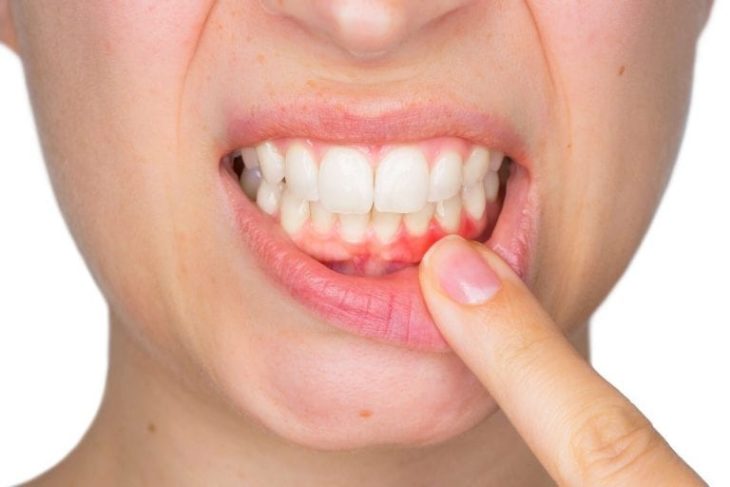Bad dental hygiene can affect your smile, overall health, lifespan, and bite. What can you expect when you stop taking care of your teeth? Not taking care of your teeth will have many consequences, one of them might be Periodontitis, or simply put gum disease.
Contents
Periodontitis
Often known as gum disease, periodontitis is a common condition in which the gums, that hold your teeth in place become inflamed. This inflammation usually takes the form of redness, swelling, and custom of bleeding while brushing your teeth. This condition is the natural body’s reaction to a specific bacteria that has gathered on the teeth. This inflammatory response can cause serious damage to a person’s teeth and overall health. If periodontitis is left untreated, the inflammation can spread down below the gums and along the roots of the teeth, causing damage to the supporting bone and ligaments. This condition leads to a potential loss of teeth.
Periodontitis is caused by bacteria (known as the periodontal bacteria), that are naturally present in the mouth, but it is only harmful if their numbers increase swiftly. This often happens when food debris and bacteria builds up and is left on the teeth. In this case, the more dangerous bacteria are able to multiply, causing the inflammatory response in the gums. If left untreated, chronic inflammation causes the jaw bone to be destroyed and the teeth to be lost.

Img source: beautifulsmilesoflongisland.com
How to recognize gum disease?
In the case of periodontitis, it always begins with the inflammation of the gums, known as gingivitis. One of the first signs of gum disease is the bleeding of the gums when you brush or floss your teeth. The gums are usually red and swollen and if you look close enough, you might notice the layer of plaque on the teeth. If gingivitis is left untreated, it will progress to periodontitis. There are some things that you might experience over time, like increased bleeding from the gums, bad breath, changes in the teeth positioning, and possible pain. The presence of periodontitis is sometimes not recognized by someone until they are in their 40’s. A dentist will be able to see the signs of the disease at an early stage, which is one of the reasons to visit a dentist more often.
How to prevent periodontitis?
New York Total Dental believes that the best way to prevent periodontitis is with good hygiene techniques and regular visits to a periodontist. The periodontist will be able to instruct you on what is the right way to brush or floss your teeth every day, which will decrease the chance of getting gum disease.
Dental floss should be used where the teeth are close together, while toothbrushes are used for larger gaps and the surface of the teeth. Antibacterial mouthwashes are also a useful tool in fighting the bacteria.

Img source: loveteethdp.co.uk
How to treat periodontitis?
It is possible to stop the progress of gum disease with careful evaluation and treatment. The key to stopping the progression is to eradicate the bacterial plaque which fuels the disease process. Some of the ways to treat periodontitis are:
1. Good oral hygiene instructions and advice – the point of oral hygiene is to reduce the number of bacteria in the mouth, hence reducing the level of inflammation.
2. Professional cleaning – a visit to a periodontist might help you as well. The process includes removing the soft deposits from areas of teeth. Depending on the improvement in the control of inflammation, further instruction will be given by the periodontist.
3. Antibiotic therapy – rarely, with or without evaluation, antibiotics might be prescribed to deal with the gum infections that did not respond to oral hygiene measures.
Conclusion
To ensure that the disease process does not reoccur, regular check-up appointments are necessary. If there is a sign of gum disease, your dentist will be able to identify inflammation and treat it at an early stage. Try to remember, in order to deal with periodontitis it requires your full co-operation in regard to the daily oral hygiene and regular check-up meetings.
